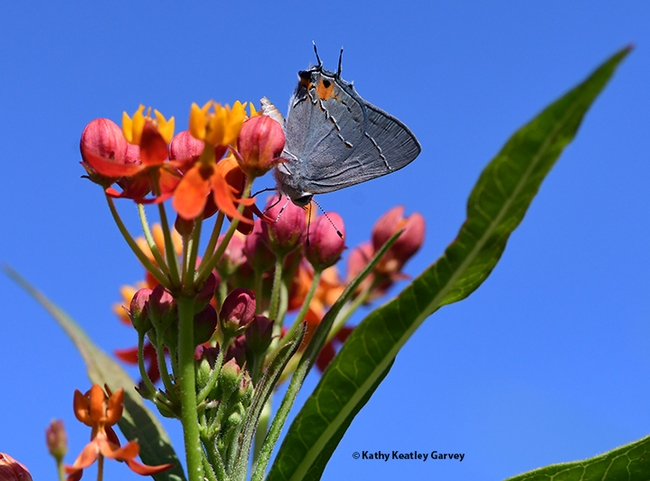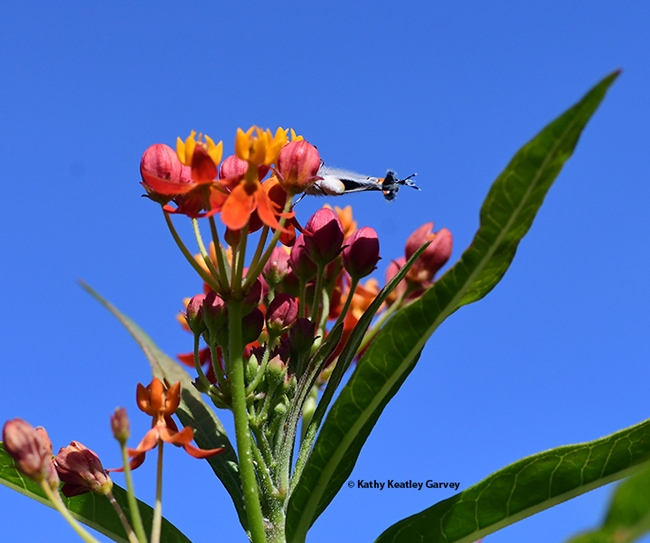Where are the monarch butterflies? They're MIA on the four species of milkweed in our Vacaville pollinator garden
But milkweed attracts other insects, including honey bees, carpenter bees, bumble bees, assassin bugs, syrphid flies, leafcutter bees, Anthophora (genus) bees, wasps, praying mantids, and butterflies, including Gulf Fritillaries, Agraulis vanillae, and gray hairstreaks, Strymon melinus. And yes, arthropods such as crab spiders and orbweavers visit, too.
On Sept. 19, we witnessed a gray hairstreak laying eggs on the buds of a tropical milkweed, Asclepias curassavica, which we planted in a container with another milkweed, butterflyweed, A. tuberosa. (Yes, we give the monarchs a choice; we also offer them showy milkweed, A. speciosa, and narrowleaf milkweed, A. fascicularis, and we cut back the A. curassavica before the fall migration, as noted entomologists recommend.)
Butterfly guru Art Shapiro, UC Davis distinguished professor of evolution and ecology, says this about the gray hairstreak on his website, Art Shapiro's Butterfly Site:
"This is one of the most polyphagous butterflies known, recorded on host plants in many families. Its most frequent hosts in our area are mallows, including the weedy species of Malva; legumes, including Spanish Lotus (Lotus purshianus), Bird's-Foot Trefoil (Lotus corniculatus), White Clover (Trifolium repens) in lawns, Alfalfa (Medicago sativa) and many others;and Turkey Mullein (Eremocarpus or Croton setigerus, Euphorbiaceae)."
So, we mentioned the gray hairstreak laying eggs on the buds of the milkweed. "Is this a host plant, too?"
"Apparently on the flower buds! Never before recorded--in fact, I have no records on Asclepiadaceae/Apocynaceae at all," Shapiro said. "They lay on Callistemon (bottlebrush) too..."
Meanwhile, update: no monarchs, no eggs. We're still waiting.
But "yes" on the gray hairstreak, Strymon melinus, and "yes" on her eggs.
Attached Images:

